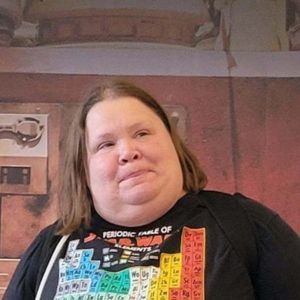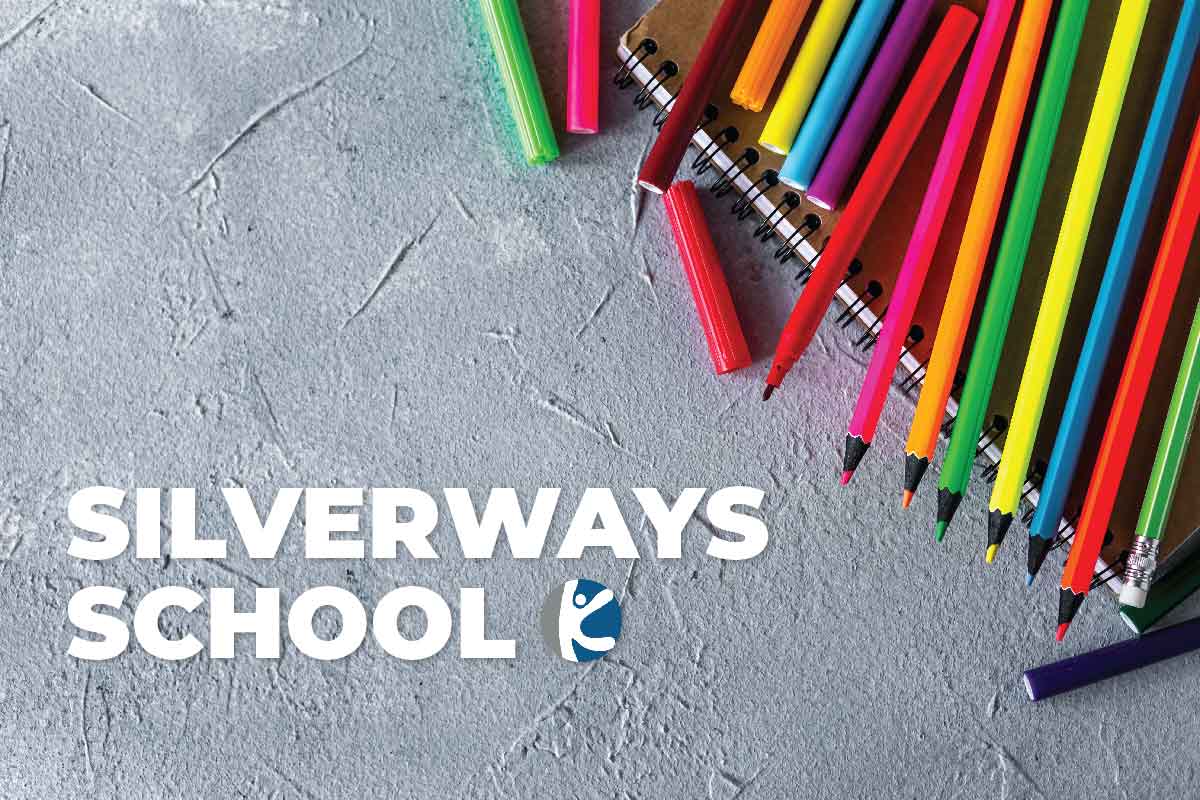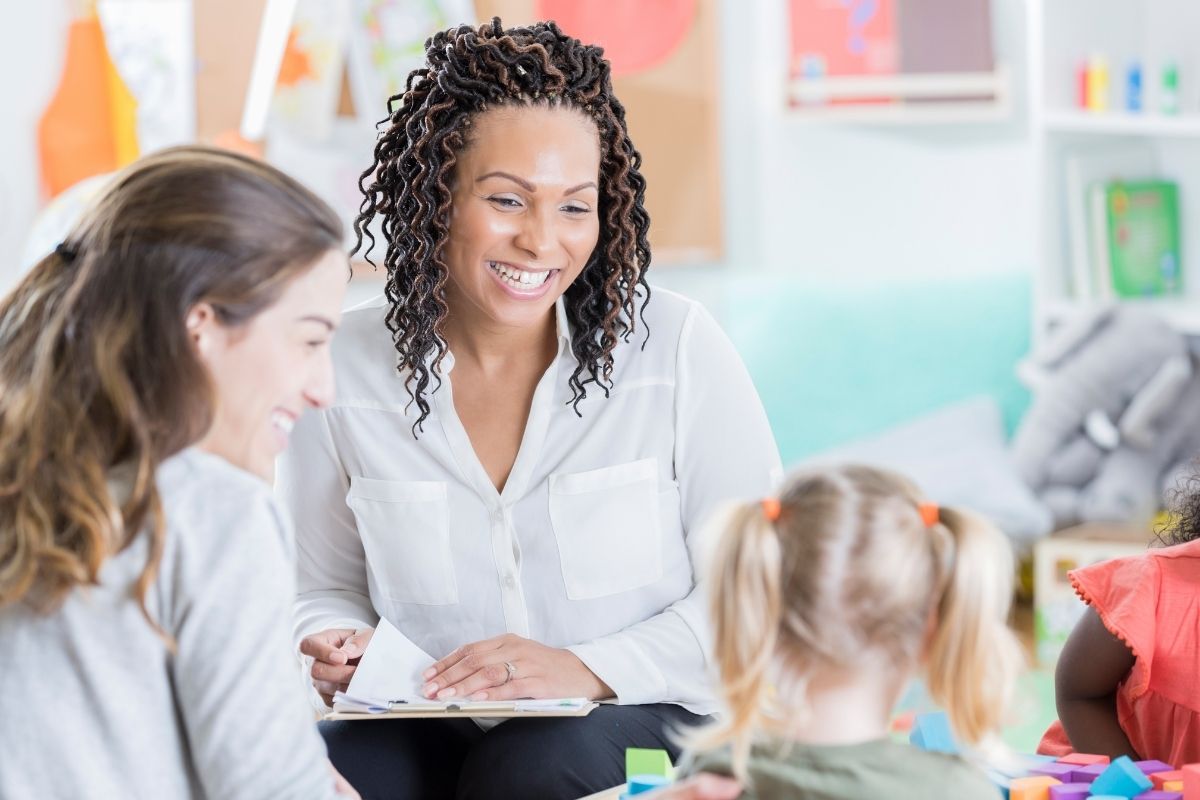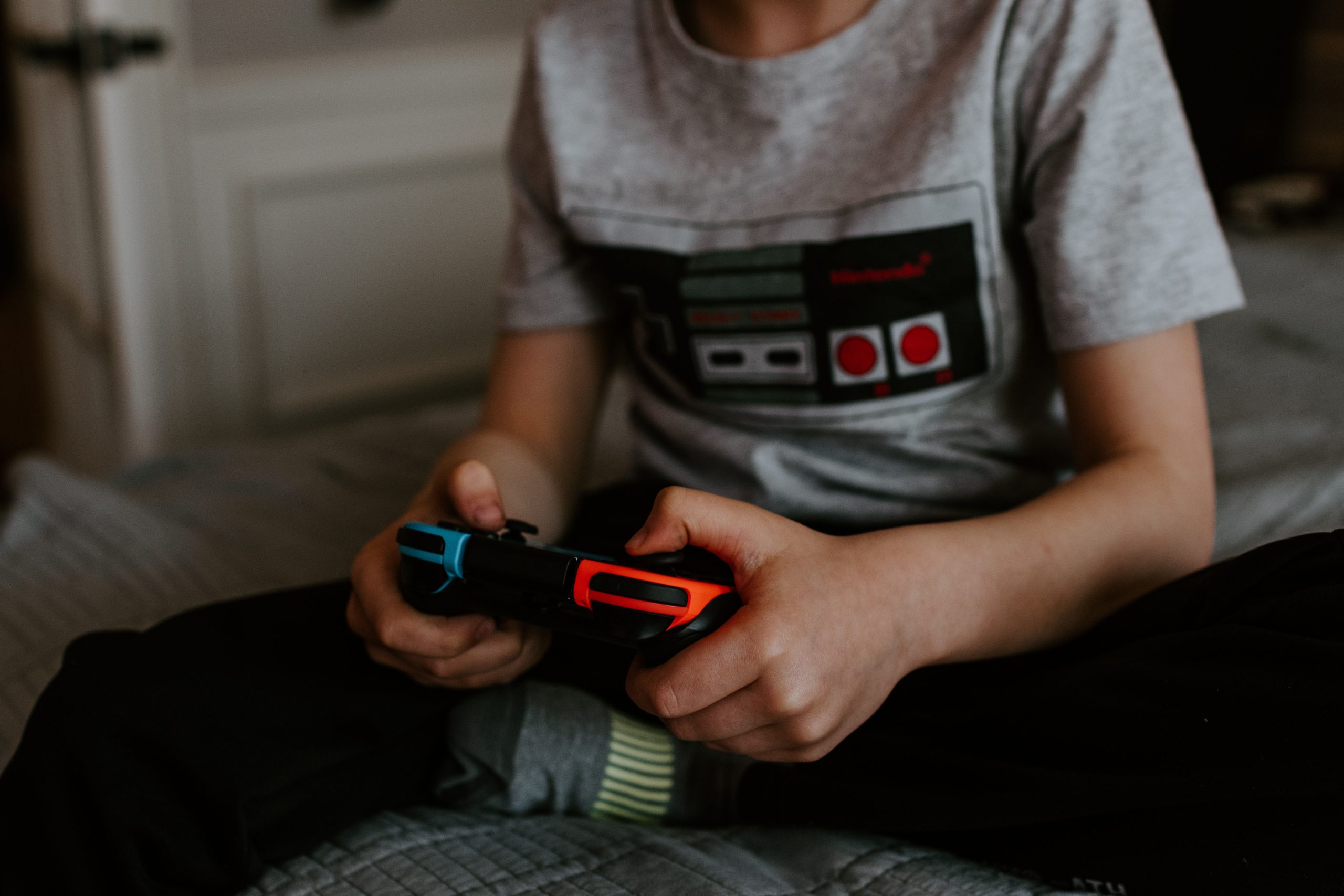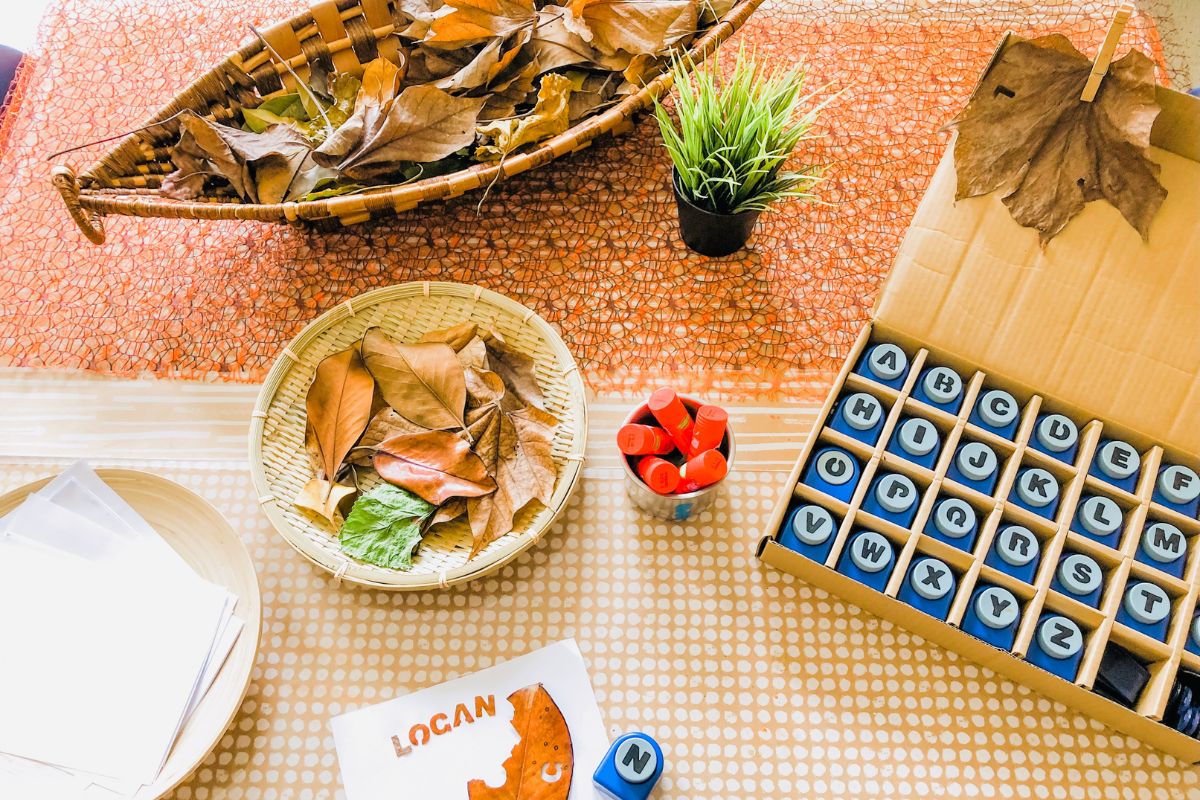Advocating For All Children to Access Learning Through Play: Acceptance for All Through Play-based Learning
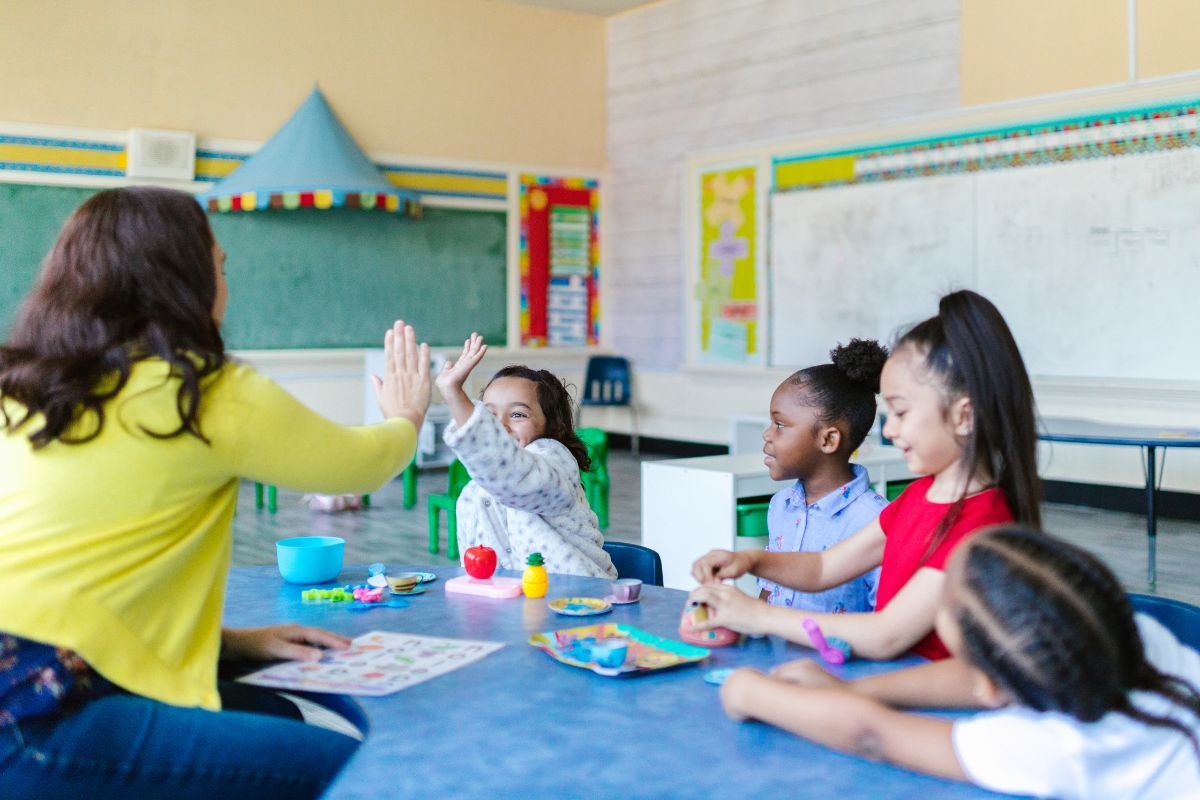
My early childhood memories on play
My passion for teaching started when I was 16 years old. The summer between my sophomore and junior year of high school, my mom asked me to “work” with my sister, who was three years old. My task was to help her build the skills she apparently lacked so she could be enrolled in an inclusive preschool rather than in a special needs preschool. My sister is severely handicapped.. I remember working and playing with my sister every day and using a list of different activities to help her improve the way she interacted with others, played, and learned. Eventually, my sister was placed in a blended preschool. To me, it seemed all children did in that class was play. Little did I know that play was fundamental for their growth. As children, I played with my grandma. We would invent games and play pretend we were at the store, school, and other places. My sister and I developed a very close relationship and to this day, I teach her what I can. She loves music and that’s what I use to connect with her. Often, people judge my sister based solely on her severe disabilities. They fail to see that she is a very loving person. I think having her in my life has made me who I am today as a person and educator.
My professional journey
Not until my recent job did I get to sit in IEP meetings and develop goals. In previous places where I worked, IEPs were given to me without much of an explanation. I saw the potential in every child and through play, I uncovered who they were. That is how I ended up pursuing my early childhood special education endorsement, along with English Language Learning (ELL) endorsement. I needed to acquire the pedagogical tools, experiences, and understanding to reach my full potential as a teacher and better support the students as learners in my classroom. Over the years, I have advocated for the right of children to play, with access to materials, and a flexible but predictable daily schedule.
I teach as part of a grant and this means that if the state or federal government decided not to fund the program, I would get a RIF (Reduction In Force) letter. In 2019, the federal government decided to not meet the state of Nevada with half the funds for the preschool grant. Because of how the government works, the state of Nevada was still in legislation to fully fund the program, so I received a RIF letter.
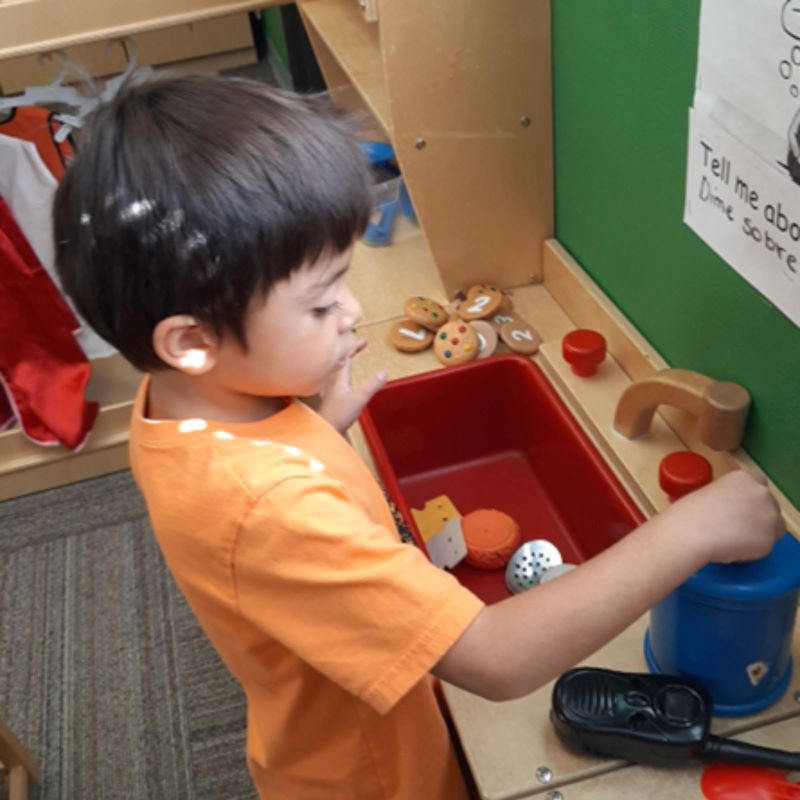
I am the sole provider for my household and I started to apply elsewhere because I needed a source of income and to do what I enjoy the most, teaching and learning with young children. I was interviewed in a few places, but one school in Clark County/Las Vegas stood out. I remember the principal explaining the characteristics of their preschool program and stating that the classrooms didn’t have play centers, like the ones I was envisioning. The principal said she would like to place me in a kindergarten class. She asked my thoughts and I sat there for a while, reviewing everything she said about the preschool program with no play-centers. I decided to take her offer to teach kindergarten, thinking that if I was going to start a new job, it would be better for me to choose a new grade. Play-based learning had guided most of my teaching career with young children so choosing a new grade was easier. However, just a day before I signed up with Clark county, I was offered a position in Nye County, which is where I currently teach. I still think about the children in that other school where apparently, children’s play was not given the importance it rightly deserves.
Introduction to the school setting
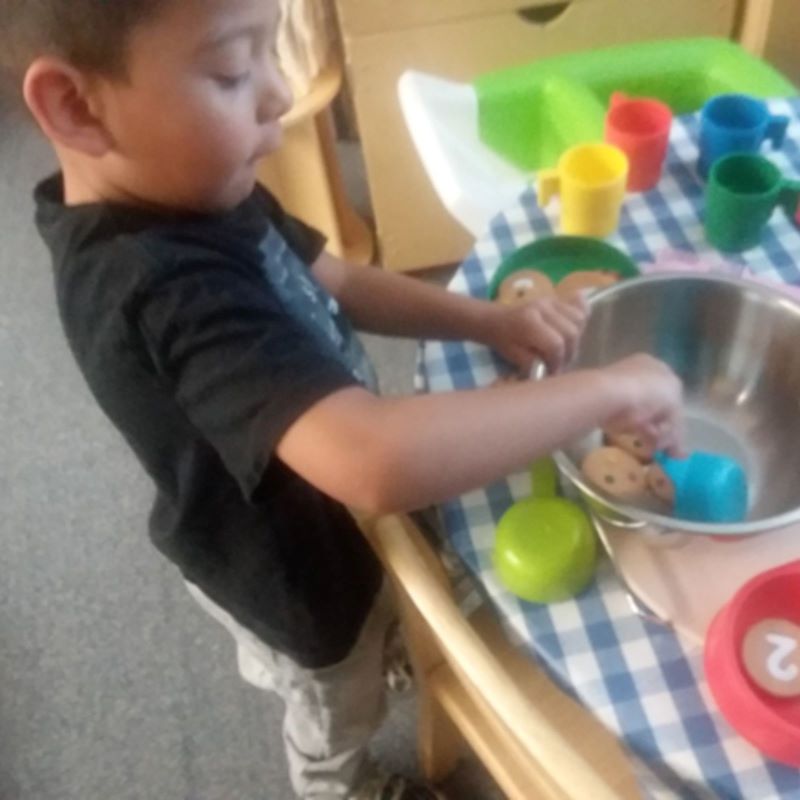
The classroom where I teach is located in a rural remote public elementary and middle school in the Nevada desert. About 75% of the school population is Hispanic. We are a Title 1 school —the purpose of Title I is to even the playing field for high-poverty children, migratory children, children with disabilities, and children from other marginalized or neglected communities (information on Title 1 Programs). Our school also includes a state grant-funded preschool program and 100% of the student population is eligible for free breakfast and lunch.
The classroom where I teach is designated as an inclusive preschool. In my classroom, I have children with a variety of disabilities. For example, in the 2021-2022 school year, there were eighteen children enrolled in my class and three had an Individualized Education Plan (IEP). Four-year-olds are given priority to be enrolled in my preschool class. However, because of the grant, three-year-olds can also be enrolled if there are spaces available and if they qualify for Special Education services through the IEP process.
Children who enter my program possess various learning abilities and knowledge. My preschool is much needed in our community. I have the huge responsibility and unique opportunity to make visible what a play-based preschool education program may look like. More often than not, I am the families and children’s first encounter with a teacher in a formal educational setting.
Joyous learning through spontaneous children’s initiated play
My school doesn’t have a philosophy on play. However, I believe that the role of play in early childhood education (ECE) is often overlooked. Play is what young children do to learn and develop as learners. have found that the idea of academically “readying” children for kindergarten is often given priority over play-based learning. Both are important and I have to keep striving for balance. All children benefit from play. Some students in my classroom who had IEPs in preschool were later tested and placed into gifted programs for their talents. I am not in any way suggesting this was as a result of playing and learning in my classroom. However, I do believe that play is a crucial aspect in children’s growth and development, in terms of linguistic and social interactions. Playing builds competence in environments where they are free to explore materials, concepts, and ideas at their own pace.
In my role as a preschool teacher, I see myself working alongside my students to support them through play in their exploration and discoveries, rather than imparting knowledge. I have found that child-led play is the best way to find a child’s natural way to learn. As their teacher and partner in their learning process, I collaborate with them and find meaning in their play.
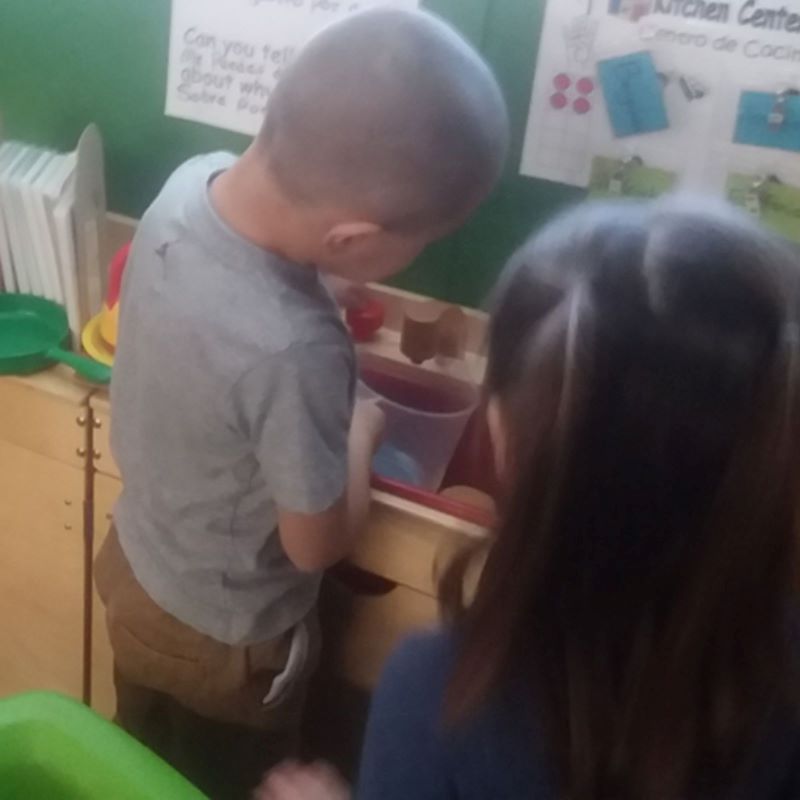
In my classroom, I have painting easels that give many children the opportunity to express themselves through painting and create something from nothing. Both the students and I consider this type of play meaningful. I am aware that some of my children may have limitations in communicating verbally, but they can certainly construct ideas and thoughts, and quite often, express themselves without restriction in other ways. For example, a rich variety of art materials gives children the opportunity to be creative and interact with me and their peers. Playdough and other sensory-oriented activities are something all children, but especially children with special needs, seem to truly enjoy. With that being said, some of the most wondrous stories and joyful moments take place in children’s dramatic play. Perhaps this is the case because I let the children freely choose both where they want to play, and what they would like to play. I trust my young students, and small groups tend to form organically.
In the dramatic play, I have heard children who mostly speak English, use Spanish, and Spanish- speakers try to communicate in English. Children with limited English or Spanish use their linguistic repertoires to communicate in one language or another. I usually situate myself in the dramatic play area, close to children, to ensure their play is equitable, making sure everyone is and feels included. I role-play with children, ask questions, scaffold language, and play roles that the children assign me. I speak limited Spanish and use it, but also encourage my teacher assistant who is fluent in Spanish to converse with the students in their home language. Some children have trouble expressing themselves and we often restate what they said or help them to re-phrase their thoughts by using sentence frames. My goal is to encourage conversation about anything, dialogue about the play theme, and interactions among the children. We don’t have a language curriculum. I use a lot of the principles I gained through my ELL endorsement along with my special education degree in speech and language.
Loewenstein, Sturdivant, and Thompson (2022) state that some of the most impactful learning opportunities in our classrooms have occurred when students give themselves permission to play and follow the flow of their own curiosities and creativity. I believe that play-based learning helps children grow and put into practice new knowledge and process new information in their social classroom interactions.
Family engagement
My preschool program has a strong family engagement component that helps parents connect to other families and socialize. Family engagement also helps parents understand the importance of play in their children’s development. Parents often invite other families to meet at our local park to play and participate in games together, and I sometimes join them. At parent orientation and parent/teacher conferences, I highlight the role of play in our classroom as part of our daily schedule. I usually invite families to share with me their perspectives on play, so that I develop a better understanding of their points of view as well.
The struggle to create a high-quality play-based program for young children with disabilities in rural America is genuine. I have gone through significant changes in my classroom to adjust the quality, pacing, and understanding of play and children’s agency in their development. Using NAEYC resources such as the recent DAP position statement (NAEYC 2020 DAP Position Statement), I highlight the multiple benefits of play and how much children learn by playing. These resources and modeling positive play interactions between me and the children enhance our ongoing understanding of our role as teachers-as-partners in children’s play.
Making time for play and reflection
The most powerful tool to support children’s play in my classroom is observation and reflection. In my teacher preparation program, I learned about observation. Professor Peg Callahan helped me understand the importance of observation and reflection to understand children and my teaching practice. For example, I use my observation skills to see a child who might be developing their language skills through interactions with peers and the use of classroom materials. Most of my documentation of children’s play, interactions, and learning starts with notes I take while I observe, along with photographs, and occasional video clips. I always ensure families’ consent to photos, videos, and the release of their child’s photos.
Children are teachers too and I learn from them. For example, I have seen children who take their time to just observe. Therefore, I usually watch what children do before I enter their play and try to engage with them. Stepping back helps me find an organic way into my young children’s world. I feel privileged when they allow me to be a partner in their play. I have noticed that quite often, children don’t just jump into the ongoing play. Sometimes, they feel encouraged to participate in an activity play because I am using specific materials or toys and they are curious to know what I am doing. Quite often, I find materials that I know particular children prefer and that’s another way to encourage them to play and interact with me and their peers. “A teacher’s role is to accept all children for who they are and help each child reach their full potential through the power of fun spontaneous and planned play.” (Smith, 2015).
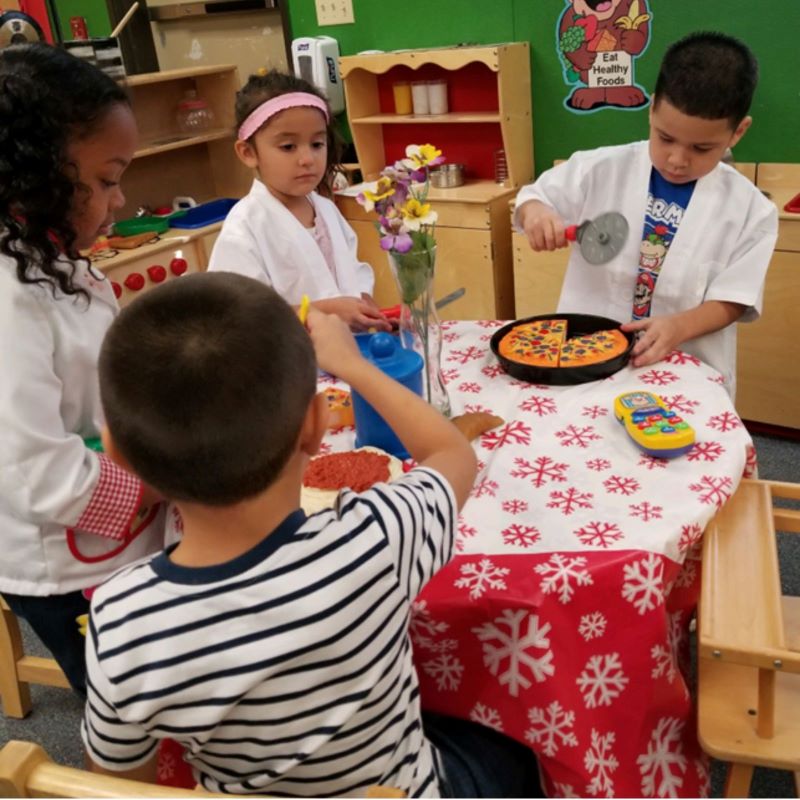
Children in my class get at least 1.5 hours of uninterrupted play indoors and 1 hour of outside time. This is 30 minutes more than the required time of 1 hour and 50 minutes of play for the 7.5 hours the children are in session. Children have multiple opportunities to participate in teacher and /or child-initiated play, and individual or group play. More structured play activities in small groups are offered in the afternoon. Small groups are not mandatory; children have the option to be a part of it or not. We follow children’s rhythm and sense of time. My philosophy on play is rooted in the use of Floortime in therapy settings (The Floortime Approach). Floortime is a relationship-based therapy for children with autism. The intervention is called Floortime because the adult, parent, or teacher, gets down on the floor with the child to play and interact with the child at their level. Adults follow the child’s lead and help them build on their strengths. This is a technique to naturally helps engage children in play and supports them in developing the ability to work and interact with other students and siblings. This technique falls within a constructivist approach to teaching and learning since it requires teachers to meet children where they are and organically and gradually scaffold their learning. When we engage children as a partner in their play, they feel valued and respected, and more willing to extend their play.
Final thoughts
The recent COVID-19 pandemic made me reflect on what truly matters to me as a teacher and human being. Even with restricted interactions and limited sharing of materials due to CDC health and safety CDC recommendations, children in my classroom have access to playdough, art supplies, cozy areas, and sensory materials, so they can play.
I encourage families to keep playing with their children and getting them involved in common chores and activities of their daily lives. I feel happy when my students tell me that their mom or dad showed them how to do something, such as watering plants, caring for pets, or cooking simple meals. These are great ways to help children play and learn. These simple things can make a big impact.
I invite school administrators to have discussions with teachers, parents, and staff about what they see children doing and playing in the classroom or outdoors and ask questions about it. Once in a while, play with a child. Engaging in conversations about the role of play in early childhood classrooms might uncover our individual understandings to develop a classroom or school philosophy on play. That seems like a logical next step at our school.
This article is available and can be accessed in Spanish here.
Loewenstien, M., Sturdivant, T., & Thompson, J. (2022) Learning Through Play in Teacher Education. YC Magazine NAEYC publications.
Smith, S. (2015). Playing, Laughing, and Learning in Preschools. TYC Magazine. NAEYC publications

